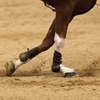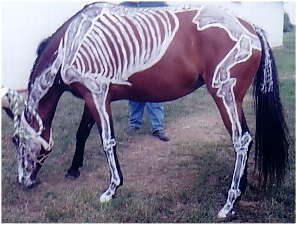|
Advice article filter
|
Bone: A lot of calcium, a little bit of magnesiumPart 1 described the role magnesium plays and how injuries occur when there is a deficiency of this mineral. However, not only magnesium is important for the horse, so is calcium. If the horse has a deficiency of calcium, that will also come out of the bones. Why do we only highlight the deficiency of magnesium and not calcium?Strong bone has one specific composition. You can compare that to making concrete: strong concrete also has one correct composition of sand, ballast and cement. If the ratios are not right, then you get bad concrete, not suitable for building foundations. Bone consists mainly of calcium, phosphorus and magnesium. Strong bone has a lot of calcium and only a little bit of magnesium. The exact ratio is: 30 parts of calcium to 14 parts of phosphorus to 1 part of magnesium.A deficiency of calcium is easily replenished. Only a little bit of bone has to be demineralised. However, if the horse has the same deficiency of magnesium, a lot more bone is needed to replace the needed magnesium. That is why a magnesium deficiency is much more dramatic than a calcium deficiency, and should be prevented at all cost. Historically, roughage contains magnesium and it is added to almost all hard feeds. In spite of that, is magnesium deficiency a common problem? Read the answer in Part 3: Is magnesium deficiency a common problem? Click here for Part 1: Magnesium, a matter of life or death Click here for Part 4: About magnesium in roughage and hard feed
 
|

